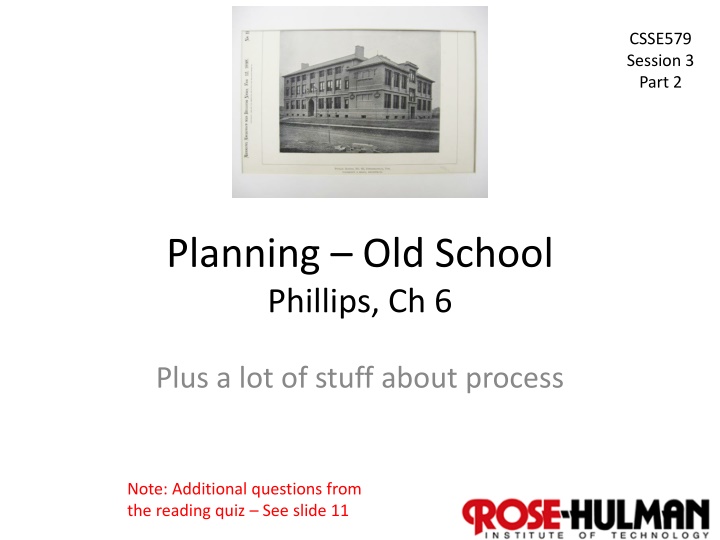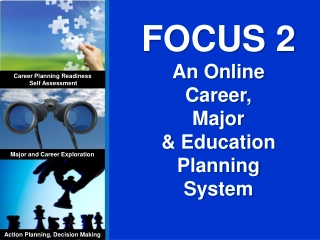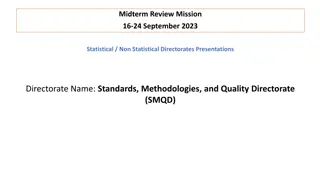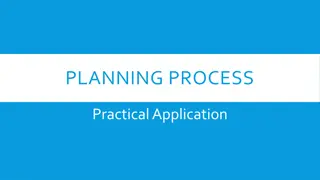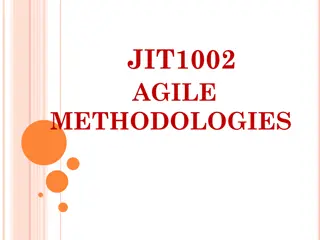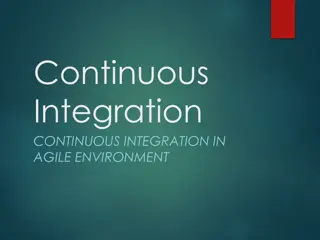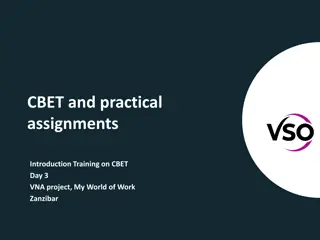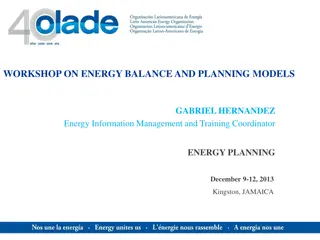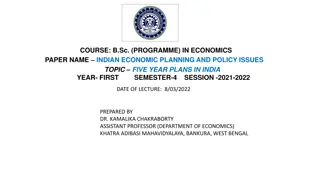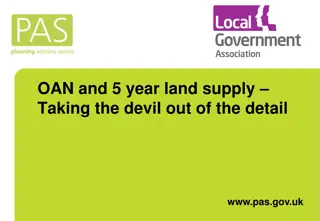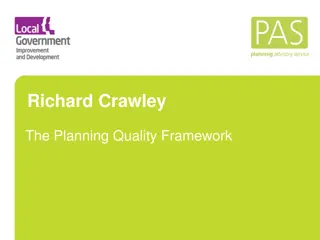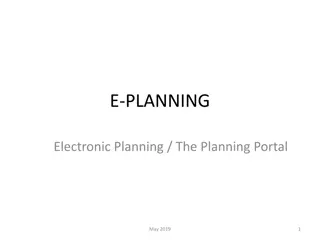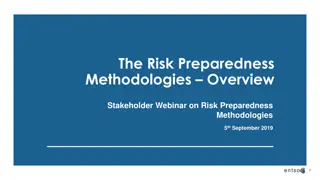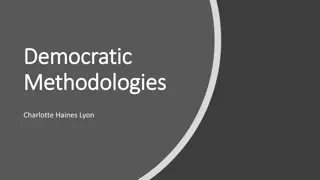Practical Insights into Planning Methodologies
Delve into Alistair Cockburn's principles for selecting a methodology and explore how different planning methods balance the dimensions of people, process, and product. Gain valuable knowledge on internal planning documents, PERT charts, and real-world examples like the Waterfall model. Discover the intersection of theory and practice in project planning.
Download Presentation

Please find below an Image/Link to download the presentation.
The content on the website is provided AS IS for your information and personal use only. It may not be sold, licensed, or shared on other websites without obtaining consent from the author.If you encounter any issues during the download, it is possible that the publisher has removed the file from their server.
You are allowed to download the files provided on this website for personal or commercial use, subject to the condition that they are used lawfully. All files are the property of their respective owners.
The content on the website is provided AS IS for your information and personal use only. It may not be sold, licensed, or shared on other websites without obtaining consent from the author.
E N D
Presentation Transcript
CSSE579 Session 3 Part 2 Planning Old School Phillips, Ch 6 Plus a lot of stuff about process Note: Additional questions from the reading quiz See slide 11 1
Alistair Cockburns principles for selecting a methodology A larger group of people needs a larger methodology. A system whose undetected defects will produce more damage needs more publicly visible correctness. A relatively small increase in methodology adds a relatively large increase in cost. The most effective way to transmit ideas among people is face-to-face interaction at a whiteboard. 2
Our class groups profile a planning method - Each balances the 3 P s differently Ref your SPMH book, or Phillips Sec 6.2.1 6.2.6 copy out on Moodle. Mt Laurel Prototyping, 6.2.1 On my left RAD, 6.2.2 On my right Spiral, 6.2.4 Matt Scrum, part of 6.2.5 Answer the 3 questions on the next slide! 3
Questions for your planning method 1. People/process/product can be related as shown in this figure. Which dimension does your method focus most on, and why? How do you include the other two aspects of people/process/product? Describe a type of project where your method might work well. 2. 3. 4
Behold the Waterfall and some V-charts 5
Internal planning documents Do you have a project context document or diagram? Shows company and project policies, in addition to external requirements Sometimes called a vision document: Idea is to show what you expect to get out of a project, beyond the customer s goals. E.g., Is this project strategic to a future direction? How does it fit in with your big-scale work flow? How does it contribute revenue, etc.? 7
Making the PERT chart Strategic question Do you already know how to make these? Cards on the wall Find critical path At the end of the day, we ll broaden this familiarity question! 8
Philips Waterfall Example Your primary customer wants a new report capability. This is similar to many of the projects you have done in the past. You and your customer know the product well, so you select the straight waterfall process 9
Addition - Your questions from the reading quiz CMMI and Agile? An elaboration: The classic conflict is that CMM appeared to require additional process documentation. E.g., To make your development process repeatable (Level 2), it had to be written down, without loopholes about how key things were done. E.g., Any extraneous process goal is perceived by Agile proponents as a return to Old school. The SE people now claim that was only one interpretation. They share goals of employing best practices like peer reviews, retrospectives and version control. 11
